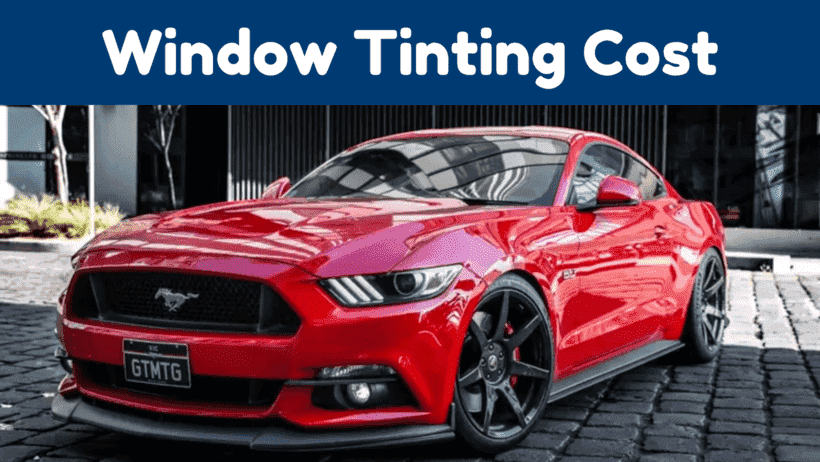
Disclaimer: As an Amazon Associate I earn from qualifying purchases.
Just as a house is not a home without its furnishings, a car isn’t yours until you’ve personalized it, and for many, that means tinted windows.
But before you rush out and get yours done, you’re likely wondering about the cost of window tint. It’s not as simple as you might think. There are many factors to consider, and the price can vary greatly.
To give you a ballpark figure, standard tint typically runs between $100-$300, while metallic and carbon tints range from $150-$400 and $200-$500 respectively.
If you’re considering a ceramic tint, expect to pay a premium, with prices averaging from $300-$1000.
What is window tint?
Window tint is a thin laminate film that can be installed on the interior or exterior of glass surfaces in automobiles and buildings. It serves to reduce the amount of heat and sunlight that enters through the glass, improving comfort and reducing glare.
Understanding what window tint is, and the factors that influence its cost will help you make a more informed decision when considering it for your vehicle or property.
Why tint car windows?
You might be wondering why people tint their car windows, and the answer lies in the versatility and functionality of window tint.
When considering the car window tint cost, you’ll find that the benefits often outweigh the cost. So why tint car windows?
| Reasons for Tinting | Benefits | Cost Considerations |
| Privacy and Security | Window tint prevents outsiders from seeing inside your car, offering protection for valuables and privacy for occupants. | While some privacy options are pricier, they offer substantial security benefits. |
| Heat Reduction and UV Protection | Tinted windows block harmful UV rays and reduce heat inside the car. | Different tints offer varying levels of protection, with higher-quality tints costing more. |
| Aesthetics | Tinted windows provide a sleek look that can enhance your car’s appearance. | Choosing for looks may increase the cost, but can add to your car’s resale value. |
Factors Affecting Window Tint Cost
The cost of window tinting can vary widely, affected by several key factors. One of the most significant of these is the type of tint you choose, whether it’s ceramic, regular, metallic, or carbon.
Each type has unique properties and benefits that can influence the overall cost.
Type of tint
Depending on your specific needs and preferences, the type of window tint you choose can significantly impact the overall cost.
For instance, ceramic window tint cost can be higher due to its superior quality and benefits compared to the regular window tint cost.
Each type of tint offers unique advantages, so it’s crucial to understand your needs before making a decision.
Ceramic tint

Among the various types of window tints, ceramic tint stands out as a premium option due to its advanced technology and higher cost.
When considering the cost of window tinting, here’s what you should know about ceramic tint:
- It’s the most expensive tint type
- Offers superior heat resistance
- Provides optimal UV protection
- It’s durable and doesn’t fade
Regular tint
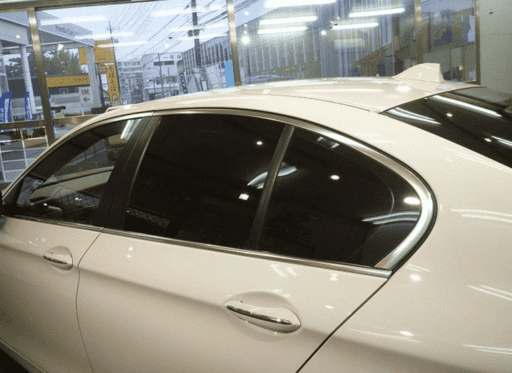
While ceramic tint is certainly a top-tier option, you’ll find that regular window tint is a more affordable choice.
Its cost depends on several factors, including the size and type of your car, local labor rates, and the quality of the regular tint used.
So, while cheaper than other options, consider these variables before deciding on a regular tint for your car.
Metallic tint
Shifting gears to metallic tint, you’ll find that its cost can be significantly influenced by factors such as the type and model of your vehicle, regional labor rates, and the quality of the metallic tint chosen.
Here’s a rundown of essential factors to remember:
- Vehicle’s type and model
- Regional labor rates
- Quality of metallic tint
- Additional services (like old tint removal)
The window tint cost can vary, so consider these aspects carefully.
Carbon tint
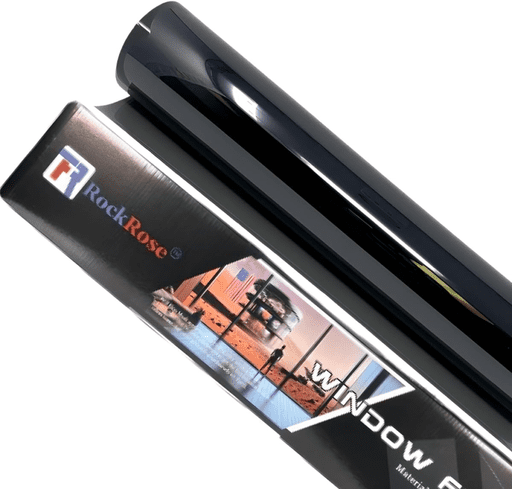
When it comes to carbon tint, you’ll find that its cost, like metallic tint, is also influenced by your vehicle’s type and model, regional labor rates, and the quality of the carbon tint selected.
The price of window tint varies, but investing in a high-quality carbon tint for your window can provide superior UV protection and fade resistance. It’s a cost-effective choice for long-term benefits.
Darkness of tint (VLT percentage)
The darkness of your window tint, measured in Visible Light Transmission (VLT) percentage, significantly impacts the overall cost of your tinting project.
- A higher VLT percentage could mean less expense
- A lower VLT percentage generally increases the cost
- Tint darkness affects how much window tint costs
- Each state has different legal limits for darkness of tint (VLT percentage)
Number of windows to be tinted
In addition to tint darkness, the number of windows you choose to have tinted also influences the overall cost of your project.
The price can significantly vary based on this factor. Therefore, when seeking an estimate, always specify the number of windows to be tinted.
Understand that more windows mean a higher cost, but it’s a crucial part of achieving the desired privacy and aesthetic.
Size of windows
Moving onto another factor, you’ll find that the size of your windows plays a significant role in determining the cost of window tinting.
- Larger windows require more ceramic tint, increasing material cost.
- Larger vehicle windows may need longer installation times, upping labor costs.
- Smaller windows may allow for more efficient use of tint sheets.
- Complex window shapes may also affect both material and installation costs.
Location of tint shop
Aside from the size and complexity of your windows, where you choose to have your tinting done can significantly sway the overall cost.
Regular automotive tint shops located in upscale neighborhoods or cities often charge higher than those in less affluent areas.
Labor costs
Labor costs also play a significant role in the final price of window tinting, varying based on the installer’s expertise and the job’s complexity. Consider these factors:
- Skilled labor is more expensive but worth it.
- DIY might seem affordable, but lacks professional finishing.
- Labor costs differ from city to city.
- High-quality service providers may charge more. Remember, a cheap service might result in substandard work.
Average Cost of Window Tint
The average cost for window tinting can be anywhere between $100 – $1000 depending on different factors.
Ceramic tint: $300-$1000
When it comes to ceramic window tint, you’ll typically find yourself investing anywhere between $300 to $1000. This cost varies due to:
- The size of the windows
- The type of vehicle
- The tint brand
- Your location
Regular tint: $100-$300
Shifting the focus to regular window tint, it’s generally more affordable with prices typically ranging from $100 to $300. As a cost-effective option, regular tint provides basic privacy and UV protection.
However, it’s important to remember that while this range covers the material cost, additional expenses for labor can push your final bill higher. Make sure to budget accordingly.
Metallic tint: $150-$400
If you’re considering a more premium option, metallic window tint, with its enhanced durability and heat resistance, typically costs between $150 and $400. This cost varies due to:
- Type of vehicle
- Window size
- Local labor rates
- Brand of tint
Carbon tint: $200-$500
Diving deeper into premium options, you’ll find that carbon window tint, renowned for its superior UV protection and absence of metallic elements, could set you back anywhere from $200 to $500.
This cost is justified by the tint’s durability and its ability to provide high-quality heat rejection without hindering mobile and GPS signals.
Additional Costs of Window Tinting
When considering the cost of window tinting, it’s crucial to factor in additional expenses. This could include the removal of old tint, opting for special tint patterns or designs, and the cost of a warranty.
Each of these elements can significantly impact your bottom line, so they’re worth considering in detail.
Removal of old tint
Before you can enjoy the benefits of new window tint, you’ll need to remove any existing, outdated tint, a process that may add extra costs to your project.
Here are some factors that might affect the removal cost of the old tint:
- The size and number of windows
- The age and condition of the old tint
- The type of car you own
- Whether you hire a professional or do it yourself
Special tint patterns or designs
If you’re considering special tint patterns or designs, it’s important to note that these customizations can increase the overall cost of your window tint project. These unique features require extra labor and materials, boosting your expenses.
However, they also add a personal touch and increased privacy. So, weigh the added cost against the benefits before deciding on special tint patterns or designs.
Warranty
Beyond the aesthetic enhancements, it’s also essential to consider the warranty associated with your window tinting, as this can add to the overall cost. Here’s what you should know:
- A warranty protects against defects or damage
- Warranties vary in duration and coverage
- Some warranties may not cover labor costs
- A lack of warranty might indicate lower-quality window tint
Consider these factors to ensure you’re making a cost-effective choice.
Window Tinting Cost by Type of Vehicle
The following prices are estimates.

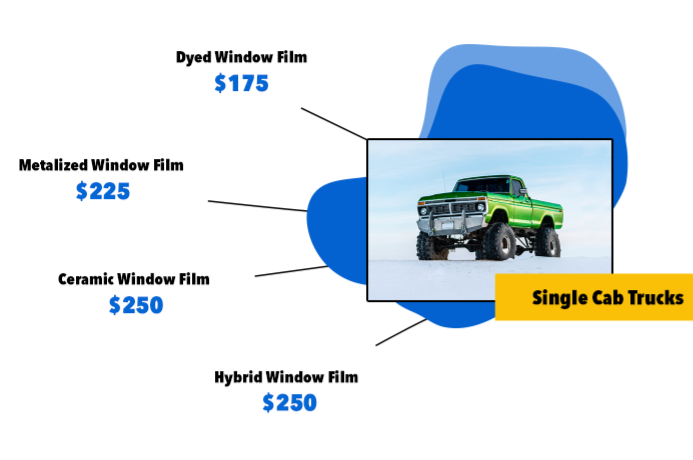

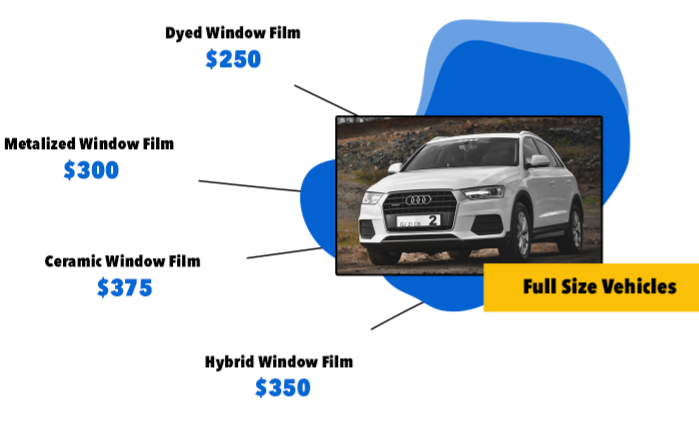
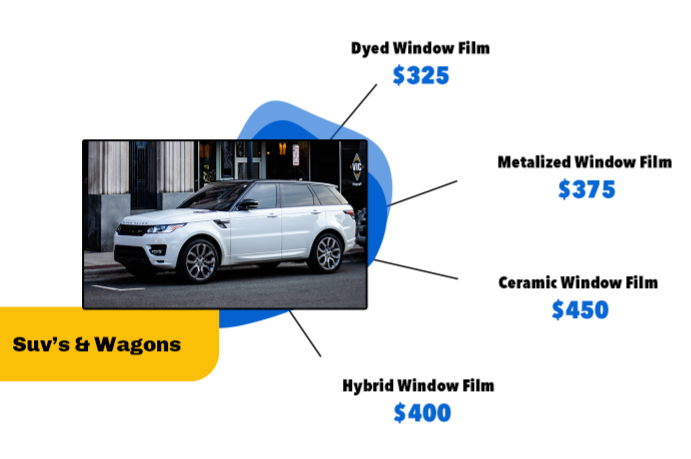
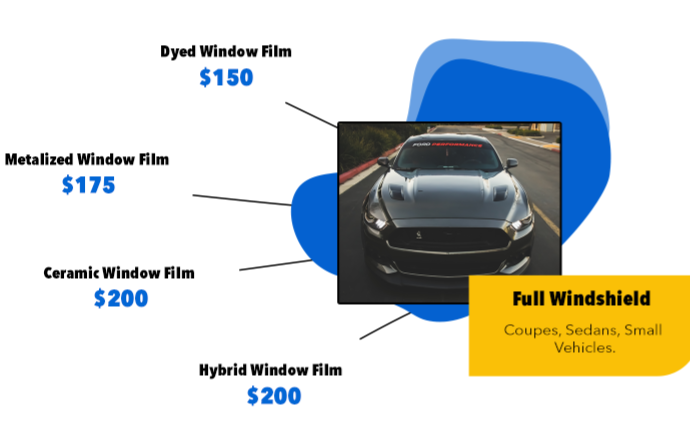
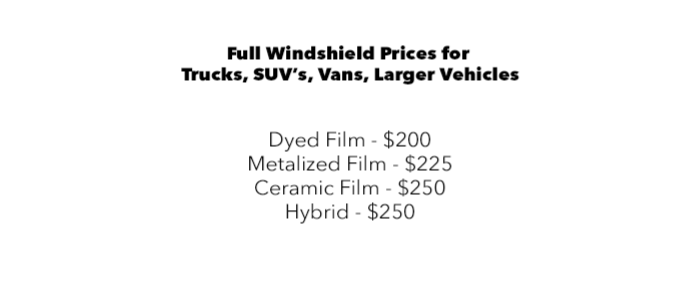
Tips for Saving Money on Window Tint
You’re ready to tint your windows, but you’re also keen to save money. We’re here to help guide you through some cost-saving strategies.
Get quotes from multiple tint shops
To save on window tinting costs, it’s savvy to get quotes from several tint shops before making a final decision.
This comparison helps determine:
- The average market price
- Potential savings from competitive quotes
- Any hidden costs or fees
- Quality of the service
Consider group discounts
Another effective way to cut down on your window tinting costs is to consider group discounts offered by several tint shops.
If you’ve got friends or family also seeking this service, combining your needs can lead to significant savings.
Look for sales or promotions
Keeping an eye out for sales or promotions at tinting shops can be a savvy way to further reduce your window tint expenses.
- Subscribe to newsletters from local tinting shops for exclusive deals
- Follow tinting shops on social media
- Keep tabs on holiday sales
- Consider off-season promotions
Stay informed and ready to pounce when the price drops. It’s all about timing and a keen eye for deals.
Opt for a less expensive type of tint
Choosing a less expensive type of tint can significantly slash your window tinting costs without compromising on quality. You’ll find a range of tints on the market, from dyed and metallic to carbon and ceramic.
Dyed tints, being the least expensive, are a great budget-friendly option, offering sufficient sunblock and privacy. But remember, lower cost doesn’t always mean lower performance.
Tint fewer windows
You can save a significant amount on your window tinting project by opting to tint fewer windows in your vehicle or property. Consider these tips:
- Prioritize windows that need the most privacy or heat protection.
- Keep the front windshield clear for safety.
- Choosing to tint only rear windows can still provide a stylish look.
- Remember, less square footage means less labor and materials, hence less cost.
Conclusion for Window Tinting Cost
Wrapping up our discussion, window tint is a thin laminate film that can be installed on the interior or exterior of glass surfaces in automobiles and buildings for a variety of purposes, including privacy, UV protection, and aesthetic appeal.
It’s a cost-effective solution to keep your spaces cooler, protect your interiors from fading, and enhance the look of your vehicle or property. The cost for window tint varies depending on the type, quality, and size of the tint, as well as the labor involved in installation.
But before you make a decision, it’s crucial to understand your local laws regarding window tinting as they can vary greatly.